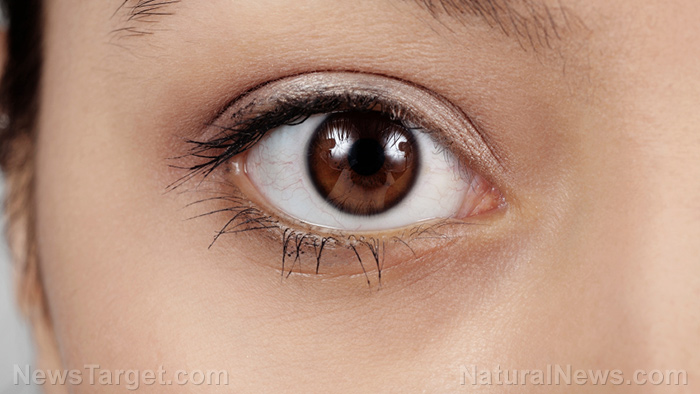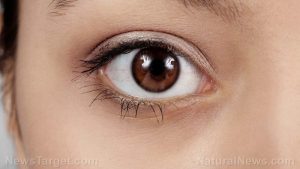
Fuchs’ endothelial dystrophy – causes, side effects and treatments at NaturalPedia.com
Wednesday, April 04, 2018 by Frances Bloomfield
http://www.naturalpedia.com/fuchs-endothelial-dystrophy-causes-side-effects-and-treatments-at-naturalpedia-com.html

Fuchs’ endothelial dystrophy, also known as Fuchs’ dystrophy, is a progressive eye disease that affects the corneal epithelium, a layer of epithelial cells that protects the cornea. In addition to acting as a barrier for the cornea, these cells also keep fluids away. As the cells die, fluid continues to build up in the cornea until it grows puffy and swollen. A person’s vision then becomes hazy and cloudy while the cornea thickens.
People with Fuchs’ endothelial dystrophy can develop this condition in their 40s, 30s, or 20s. However, the symptoms are minimal during this stage. As such, people who have Fuchs’ endothelial dystrophy are unaware that they have it until their 50s.

Known side effects and risk factors of Fuchs’ endothelial dystrophy
Though it has yet to be confirmed, Fuchs’ endothelial dystrophy may be genetic. An individual with a family history of this disease is more prone to developing it than other people. Smokers and diabetics are at higher risk of Fuchs’ endothelial dystrophy, as are women.
The symptoms of Fuchs’ endothelial dystrophy vary according to the stage. In the early or first stage of Fuchs’ endothelial dystrophy, very few, if any, symptoms occur. The most a person will experience at this point is hazy or blurry vision upon waking up, though this usually goes away within the day.
Noticeable symptoms manifest at the later or second stage. As the disease advances and more fluids collect in the cornea, these symptoms will start to show:
- Difficulty seeing at night
- Foreign body sensations, or the feeling that something is in the eye
- Low vision in humidity
- Pain in the eyes
- Poor vision that fails to improve throughout the day
- Seeing halos around lights
- Sensitivity to light
- Swelling
Body systems harmed by Fuchs’ endothelial dystrophy
Fuchs’ endothelial dystrophy affects the eyes and may lead to complications of these organs. There have been some cases of people developing physical symptoms like cloudiness within the cornea or blisters. These blisters can then grow larger until they pop and cause eye pain. Other cases of Fuchs’ endothelial dystrophy have this condition changing the shape of the cornea, resulting in even more vision problems.
Food items or nutrients that may prevent Fuchs’ endothelial dystrophy
A well-balanced and healthy diet can greatly mitigate the risk of Fuchs’ endothelial dystrophy. According to Healthline.com, such a diet would include nutrients that support eye health, such as:
- Beta-carotene
- Lutein
- Omega-3 fatty acids
- Vitamins A, C, and E
- Zeaxanthin
- Zinc
Foods that contain these nutrients include:
- Carrots: These vegetables are known for containing vitamin A and beta-carotene, both of which can are essential to avoiding detrimental eye conditions.
- Eggs: The yolks are loaded with a plethora of eye-healthy nutrients, specifically vitamin A, zinc, lutein, and zeaxanthin.
- Fish: Fatty fish such as salmon and tuna have omega-3 fatty acids, which are healthy fats that encourage eye health and development.
Treatments, management plans for Fuchs’ endothelial dystrophy
During the early stage of Fuchs’ endothelial dystrophy, excess fluids are removed from the cornea through five-percent sodium chloride eye drops. Doctors may also recommend soft contact lenses to reduce sensitivity to light.
In more extreme cases, a transplant may be necessary. The affected person can opt to either undergo a full corneal transplant or an endothelial keratoplasty, wherein damaged endothelial cells are placed with new ones.
Maintaining healthy eyes may prevent or slow down the progression of Fuchs’ endothelial dystrophy. In addition to eating foods that promote good eye health, this can be done through managing blood sugar, cutting down on smoking, and wearing sunglasses when outdoors. Visiting an eye doctor every one to two years is highly recommended as well.
Where to learn more
Summary
Fuchs’ endothelial dystrophy is an eye condition that affects the cornea. Initially, it can cause blurriness or cloudiness on waking up, but the symptoms worsen as the disease progresses. Night vision problems, eye pain, and sensitivity to light are just some of the symptoms associated with Fuchs’ endothelial dystrophy. Special eye drops will usually take care of this problem, though surgery may be needed in some cases.
Sources include:
Tagged Under: Tags: Fuchs' endothelial dystrophy





